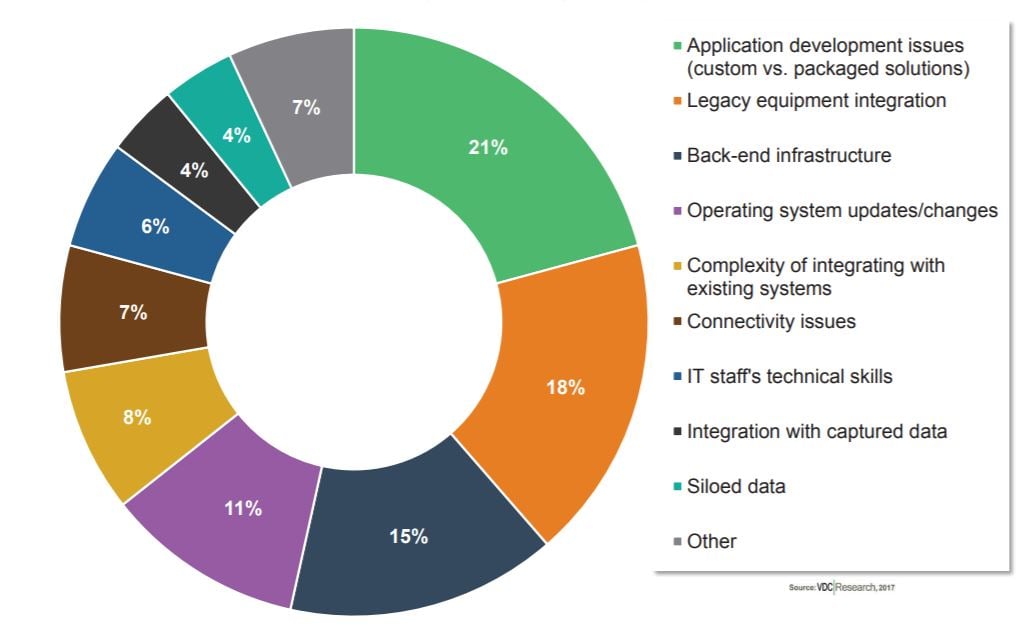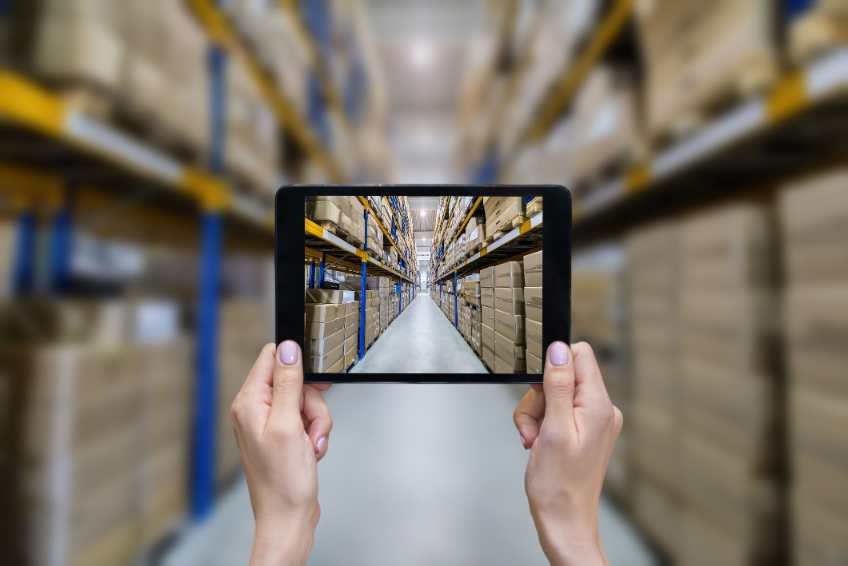Mobility in the Warehouse: Obstacles and Opportunities
Recent research by respected market watchers VDC Research Group indicates that mobility and modernization technologies are a top spending priority for warehouse technology decision makers. While such investments are critical, they must be made in ways that effectively address key challenges and pave the way for true operational and business benefits.
The Three Key Obstacles to Warehouse Modernization
For its recent white paper, Taking Advantage of Apps and App Modernization in Warehousing, VDC Research analysts surveyed some 143 professionals in North America and Europe. Respondents were all “responsible for the selection, purchase, and/or support of mobile solutions in warehouse deployment environments.” And most are already committed to modernizing the tools used in their warehouse operations, especially their mobile devices and applications.
Why? “A critical component of today’s digital transformation strategies is migrating legacy mobile applications running on aging equipment to take advantage of more sophisticated and functional modern mobile solutions and their intuitive interfaces. Today’s warehousing professionals face big changes in the ways warehouses, distribution centers and the entire supply chain operate. More facilities and larger spaces demand modern mobile communications and application access virtually everywhere on or off the floor.”
The result? “VDC data showed that 53% of IT decision makers supporting warehouse operations viewed their mobility deployments as immature.” Furthermore, “VDC’s data also showed that 56% of organizations plan on upgrading their existing fleet of mobile devices because these devices are nearing their end of life and/or the old age of their existing devices. In addition, the motivation to upgrade applications to a more visual and modern user interface was cited by one in four respondents as a critical factor influencing their upgrade decision.”
These desires confront the first two major impediments to warehouse technology modernization – old hardware, and old software. Legacy mobile devices simply cannot run modern applications. As VDC found, “many ruggedized mobile deployments used in warehouse deployments are text-oriented and keyboard-centric solutions.”
However, there are many challenges facing those decision makers when considering modernizing their warehouse devices and applications. Those cited most often by VDC survey respondents included application development and complexity of integrating legacy equipment and existing systems, as shown below. 
To complicate things further, the leading operating systems running on many mobile warehouse devices are all approaching end of life. Microsoft’s Windows Embedded CE version 6.0 will reach the end of its life on June 10, 2018. Windows Embedded version 8.1 will do so on June 9, 2019, while Windows Embedded Handheld (WEH) version 6.5 will reach its end of life on January 14, 2020.
Some 35 percent of those surveyed by VDC cited this as the primary reason they are choosing to upgrade the mobile platforms in their warehouses. Preparing for these deadlines is “essential for any organization maintaining these deployments; the devices impacted are often required for day-to-day job-related activities/functions of their users.”
This raises the third critical obstacle to warehouse technology modernization: the need to modernize non-disruptively. “Deploying mobile solutions in a warehouse requires special care across numerous aspects due to its process-intensive nature, coupled with the fact that it is a core component of the manufacturing value-delivery mechanism. Thus, it is imperative that the deployment blends in smoothly with day-to-day activities and causes minimal disruption.”
Overcoming the Obstacles
“Modern mobile solutions offer opportunities to gain agility and speed, and can help in evolving warehouse professionals move away from processes that are governed by manual labor and paper-based tracking to one in which technology plays a vital role in better utilization of available resources and growing space restrictions.”
Getting to these benefits can be daunting. Migrating legacy applications, creating new ones, and integrating everything can be difficult, time-consuming, and expensive. “Many large enterprises have traditionally supported this through internal teams and are now sitting on often millions of lines of custom code with no clear documentation that ultimately needs recoding to leverage next generation platforms.”
Fortunately, effective, affordable alternatives now exist. Industrial browsers “incorporate critical data-capture technologies that are critical to the infrastructure and workflows in warehouse environments. When considering that many of the aforementioned legacy Windows applications are terminal screens, using an industrial browser is a logical means of porting legacy applications to modern mobile platforms.”
Industrial browsers “offer an opportunity to alleviate the pain of re- writing legacy applications, and will dramatically simplify the transition to new mobile platforms.” Increasingly, those modern platforms are running Google’s Android operating system, not Microsoft Windows. Running your warehouse applications on newer, Android-based devices offers “the opportunity to leverage your present IT infrastructure and gain access to your legacy systems, such as “green screen” telnet clients, on a modern mobile platform. New mobile platforms will be required as our workforce ages, and new entrants to the workforce will begin to expect modern mobile solutions.”
By adopting tools that enable minimally disruptive adaptation of legacy applications, your organization can gain greater control over the pace of migration. You can, for example, begin by moving to newer, Android hardware quickly, then move to new user interfaces and experiences as business needs and constraints dictate. This approach also makes it easier and more economical to integrate features such as voice enablement, and to add comprehensive device management to your environment.
Ivanti: Your Warehouse Modernization Partner
Ivanti Velocity eases and speeds porting your applications to Android devices. Ivanti Speakeasy makes voice enablement of warehouse applications fast and affordable. And Ivanti Avalanche brings “enterprise-class” device management to your warehouse. Ivanti works closely with device manufacturers, to incorporate control of their specific features into Avalanche. The solution is also highly scalable. Larger Ivanti customers manage tens to hundreds of thousands of mobile devices with Avalanche.
Whatever the specifics of your current warehouse mobility solutions, their underlying operating systems and hardware are going away, sooner or later. And you don’t want your organization to be the last of your competitors to adopt modern, Android-based solutions. Get your complimentary copy of the VDC white paper then explore our solutions online. We're happy to answer any questions you might have to get you on the path to effective warehouse modernization, starting now.
